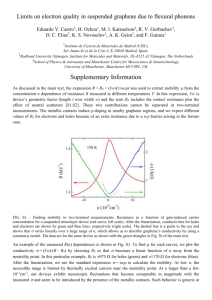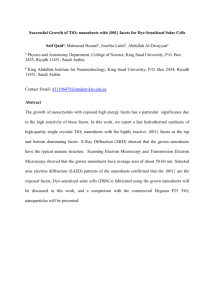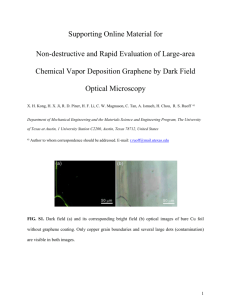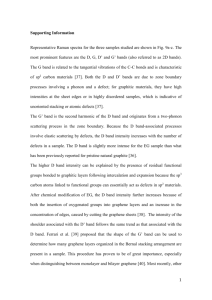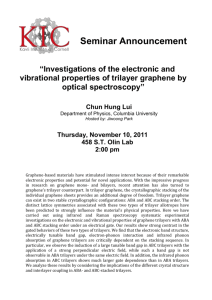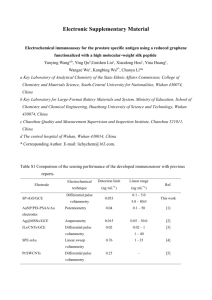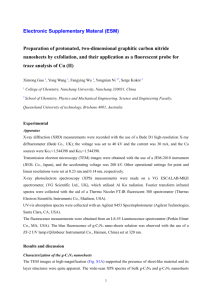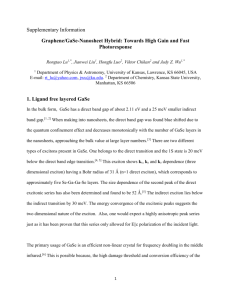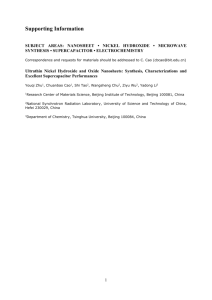Supplemental Material for Publication
advertisement
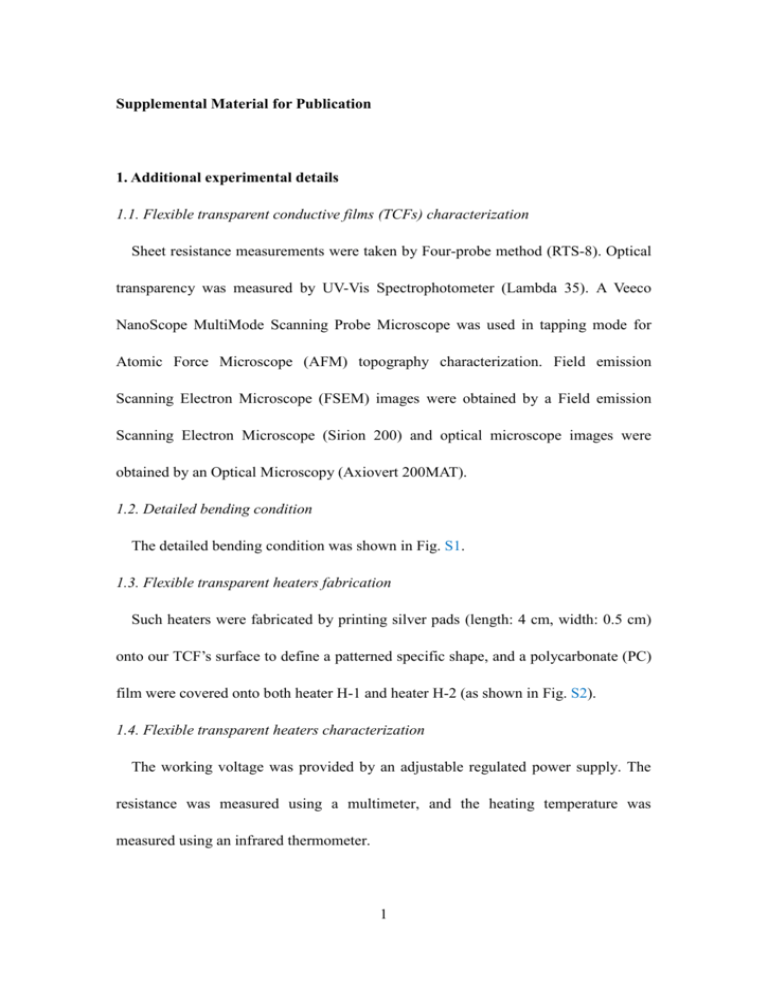
Supplemental Material for Publication 1. Additional experimental details 1.1. Flexible transparent conductive films (TCFs) characterization Sheet resistance measurements were taken by Four-probe method (RTS-8). Optical transparency was measured by UV-Vis Spectrophotometer (Lambda 35). A Veeco NanoScope MultiMode Scanning Probe Microscope was used in tapping mode for Atomic Force Microscope (AFM) topography characterization. Field emission Scanning Electron Microscope (FSEM) images were obtained by a Field emission Scanning Electron Microscope (Sirion 200) and optical microscope images were obtained by an Optical Microscopy (Axiovert 200MAT). 1.2. Detailed bending condition The detailed bending condition was shown in Fig. S1. 1.3. Flexible transparent heaters fabrication Such heaters were fabricated by printing silver pads (length: 4 cm, width: 0.5 cm) onto our TCF’s surface to define a patterned specific shape, and a polycarbonate (PC) film were covered onto both heater H-1 and heater H-2 (as shown in Fig. S2). 1.4. Flexible transparent heaters characterization The working voltage was provided by an adjustable regulated power supply. The resistance was measured using a multimeter, and the heating temperature was measured using an infrared thermometer. 1 FIG. S1. Bending condition. FIG. S2. (a) Heater H-1. (b) Heater H-2. 2. The surface stability of films fabricated by wiping-rubbing method (under different surface destructive treatments) 2 TABLE SІ. The change rates of TCF properties after different surface treatments Treatments Change rate of Change rate of resistivity transparency < 0.1% < 0.1% < 0.1% < 0.1% < 1.0% < 1.0% < 0.1% < 0.1% < 0.1% < 0.1% After gently friction test: paper < 0.1% < 0.1% After gently friction test: cloth < 0.1% < 0.1% Bending for 100 cycles Storage without protective layer for 2 weeks Ultrasonic cleaning for 60 mins After tape test After gently friction test: finger 3. Additional comparative experiment results of surface stability For comparison of surface stability of films fabricated by wiping-rubbing method and other methods, we had prepared flexible TCFs on PC matrix by spray coating, inject printing, dip coating and filtration transferring of solution dispersed graphene. The ultrasonic cleaning, adhering-tearing, and gently wiping treatments were also tested. However, the functional layers of these films were easily destroyed due to the poor surface adhesion. Therefore, the flexible TCFs fabricated by wiping-rubbing method are far more resilient to mechanical deformation than other existing methods concerning the much stronger surface stability of the samples. 3 4. Comparison results of surface roughness of PC films before and after graphene nanosheets transferred In order to compare the surface roughness of raw PC films before and after graphene nanosheets transferred, we have removed off the graphene nanosheets on one sample by severely surface friction treatments: scrubbed the graphene nanosheets by close at excessively friction pressure (100 KPa). The comparison results were given in Fig. S3. It could be clearly seen that the surface roughness of them were similar (Both were within 3 nm). Fig. S3. Surface roughness of raw PC films before and after graphene nanosheets transferred. (a) AFM image of a 5 μm × 5 μm area of raw PC film before graphene nanosheets transferred. (b) AFM image of a 5 μm × 5 μm area of PC film after graphene nanosheets transferred and removed off. 5. The morphology of graphite powders layer generated by wiping and the morphology of graphite block after wiping 4 FIG. S4. (a) FSEM image of graphite powders layer generated by wiping (5000 times magnification). (b) FSEM image of graphite block after wiping step and sucking away the graphite powders layer by vacuum cleaner (5000 times magnification). 6. Heating results of heater H-2 FIG. S5. Heating results of heater H-2 at three conditions. 5


